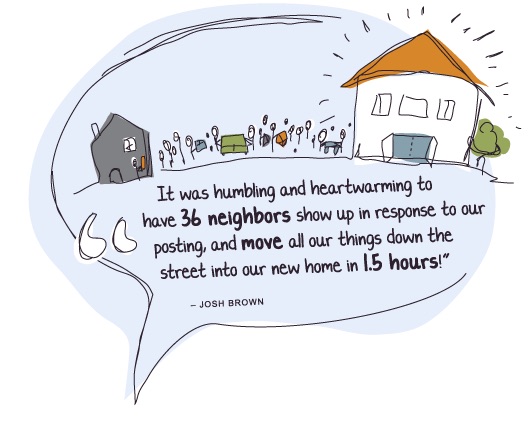Augmented reality and gamification provide new and better ways for government and nonprofit organizations to engage with more citizens and stakeholders and on a deeper level. First, we will define and differentiate these terms; then, we’ll explore how these two elements combine in the Pokémon GO!, a hot new mobile application with great community engagement potential.
AUGMENTED REALITY & GAMIFICATION
Augmented reality refers to a viewing one’s real-world surroundings with supplemental computer-generated outputs such as sound, video, or graphics. Often, the computer-based platform customizes its outputs based on one’s inputs, using the device’s video or GPS data.
Several government and nonprofit organizations use augmented reality to guide citizens through their facilities and engage with stakeholders. For example, the U.S. National Park Service has released augmented reality mobile applications for several of its parks, including Lassen Volcanic National Park and Washington D.C.’s National Mall. The National Mall application provides a virtual tour guide, helping visitors to navigate the Mall’s 22 memorials, providing history lessons, and sharing lesser-known facts and tips. Lassen’s application allows visitors to explore the science behind the park’s geology, weather, and natural flora and fauna. The Smithsonian Institute’s “Skin and Bones” augmented reality application allows users to put skin over the bones displayed in its Natural History Museum.
Many augmented reality platforms employ one or more elements of game design. Gamification refers to using game design elements to create more game-like and engaging experiences. There are 47 elements of gamification, including providing feedback on progress, issuing challenges, creating mysteries, and generating time pressures. Read more about the elements of gamification here.
POKÉMON GO!
On July 6, 2016, the Japanese video game and console producer, Niantic, released the augmented reality game, “Pokémon GO!” The game has quickly become the first widespread augmented reality sensation.
The Pokémon GO! application for smartphones and tablets uses the device’s camera and GPS to add virtual Pokémon — or “pocket monsters” — and their accoutrement (e.g., Pokéballs, eggs, incubators, etc.) to real spaces. Users collect, incubate, and train these virtual monsters in order to increase the size and strength of one’s team; then, users’ monsters battle other users’ monsters at gyms to increase their ranking and win in-game prizes.
Finding and maturing one’s Pokémon requires a user to walk around their community, as measured by the device’s GPS and accelerometers: neither walking on treadmills nor driving count towards one’s walking total. Niantic tagged many of Google Map’s local attractions — such as parks, museums, and other popular destinations — as Pokéstops (places where users can find key Pokémon, game supplies, or accessories) and gyms (places where users’ monsters compete). Users currently have the ability to purchase and drop lures, which turn any location into a Pokéstop and attract nearby Pokémon for 30 minutes. Niantic President John Hanke reported that future releases will allow businesses and other organizations to sponsor a Pokéstop or gym designation at their location. Hanke also reports that future releases will allow organizations to add information about their site to the platform.
Thus far, Pokémon GO! has proven successful at getting citizens to explore new places around their communities. Pokémon GO! has value for governments and nonprofits interested in highlighting less popular local attractions. Additionally, by getting citizens to explore new areas and meet new people, Pokémon GO! has the potential to create bridging social capital, possibly making it a powerful tool for community development. As a result, several leading government organizations are already using this platform to boost their social media presence and increase local attendance. For example, on its Twitter and Facebook pages, the North Carolina Zoo highlighted Pokémon hanging out near certain exhibits (see photo). The City of Norfolk, Virginia, paired Pokémon GO! with its existing Instagram contest by encouraging Pokémon GO! users to post photos of City parks, with the best photo winning a survival pack that includes a sling-back bookbag, water bottle, snacks, and portable phone charger.
| LEFT: NC Zoo official Facebook page, accessed 17 July 2016. RIGHT: Twitter search for #PokemonGo & #innovategov, accessed 17 July 2016. HEADER: HEATSTREET, accessed 17 July 2016. |
In addition to encouraging citizens to explore facilities, government and nonprofit organizations can leverage Pokémon GO! to increase attendance at local events by publicizing when and where they’ll drop lures. For more on potential government and nonprofit applications for Pokémon GO!, check out this GovLoop article.
BOTTOM LINE
Based on Hanke’s comments, future releases of Pokémon GO! may have the ability to become powerful augmented reality platforms that governments and nonprofit organizations can use to share information about their facilities without the cost or effort of developing customized augmented reality applications, like the National Parks’ or Smithsonian Institute’s. Time will tell whether this application becomes just a temporary success or the basis of a new augmented reality platform. However, based on citizens’ initial reaction to this application, those of us working in government should be asking ourselves: How can we use technology to deliver digital experiences that are as or more engaging than Pokémon GO!?





